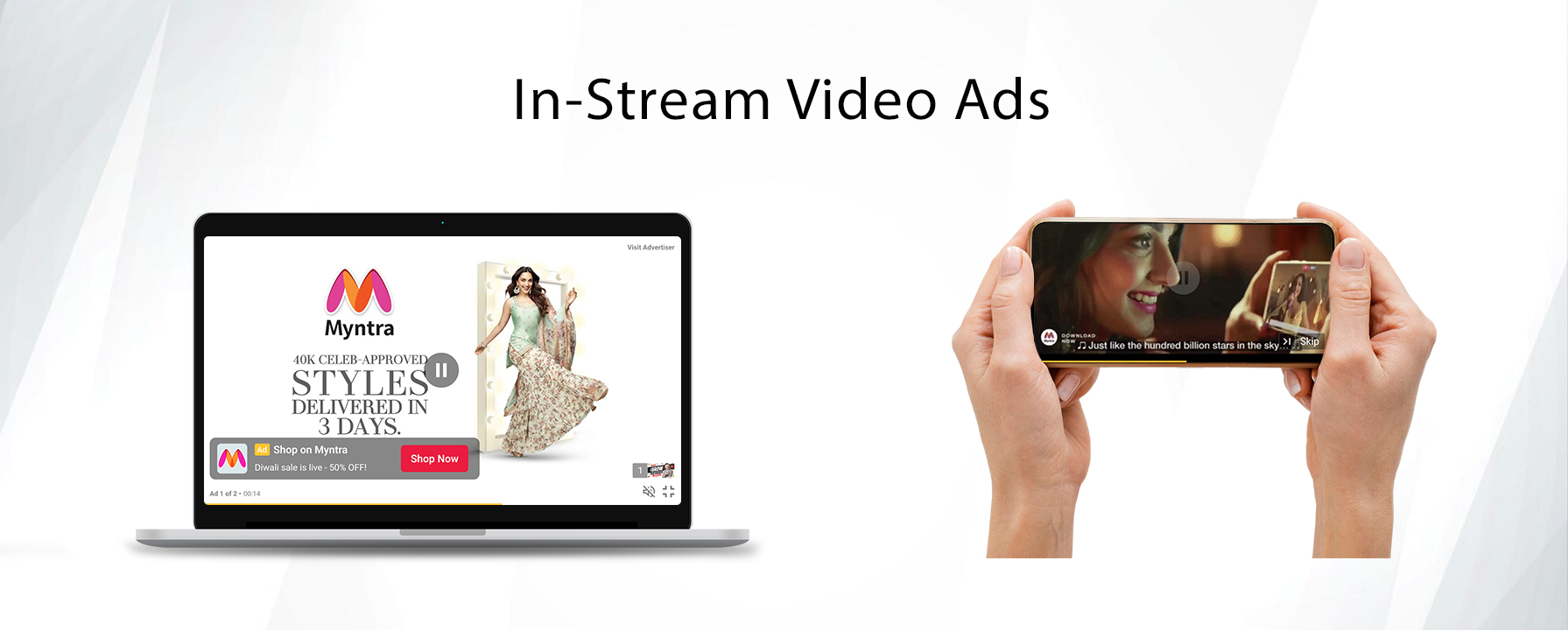
In-Stream Video ads are video ads that play before, during, or after a video stream. These ads are placed within video content, capturing viewer attention when they’re most engaged.
Below are the few strategies that will help you with your In-stream video ads by improving user experience, maximizing yields and boosting engagement.
-
Reduce Bounce Rates
What are bounce rates?In video advertising, a bounce occurs when a viewer exits a video before engaging with the content or before it finishes. High bounce rates can severely impact the effectiveness of your video content and ad campaigns.
In the fast-paced world of digital content, attention spans are shrinking, and pre-roll ads can sometimes be the reason viewers bounce before the content even starts.
So, what’s the solution? Mid-roll ads!
Why mid-roll ads can help: Mid-roll ads, unlike pre-rolls, are shown in the middle of the video after the viewer has already started watching the content. By that point, viewers are more likely to stay for the duration of the ad because they’ve already committed time and attention to the content.
Here’s the summary of why you should consider avoiding pre-roll ads and focusing on mid-roll placement instead:
-
Reduce viewer drop-off - Viewers are more likely to stay engaged once they’ve started watching the content.
-
Natural integration - Ads in the middle feel less disruptive as users are already invested in the content.
-
Higher engagement rates - Mid-roll ads often achieve better completion rates, leading to better overall campaign performance.
-
-
Limit ad cue points and leverage ad breaks!
What are ad cue points? Cue points are pre-defined moments in a video where ads can be inserted. Some platforms and advertisers use multiple cue points throughout a video, which can lead to frequent interruptions.
Why fewer ad cue points are better: Instead of showing ads frequently across multiple cue points, focus on fewer but more meaningful breaks. This limits the disruption to the viewer’s experience, allowing them to stay engaged with the content for longer periods without constant interruptions.
Ad breaks for multiple ads: When you use fewer cue points, you can introduce ad breaks, which are moments in the video where multiple ads are shown back-to-back. By consolidating ads into a single break, you reduce the need for viewers to constantly switch back and forth between content and ads.
Below are the key takeaways for optimizing cue-points
-
Instead of bombarding viewers with ads at multiple cue points throughout the content, focus on fewer, well-placed cue points.
-
Introduce ad breaks with multiple ads within a single break, allowing users to maintain their focus on the content rather than switching context over and over.
-
-
Pre-cache ads!
What is pre-caching? Pre-cachingrefers to the practice of loading an ad in advance, before it is set to be shown. This ensures that when the ad cue point arrives, the ad is ready to play instantly without any buffering or loading delays.
How it works:The ad is pre-loaded in the background while the viewer is watching the video. When the ad opportunity comes up, the video player seamlessly transitions to the ad without any delays.
During an ad break with multiple ads, the first ad is pre-cached and when it begins playing on ad show opportunity, the next ad in the sequence is cached to ensure seamless transitions without delays. Once the ad break ends, the first ad of the following break is pre-cached as well, ensuring a continuous and smooth viewing experience. It also ensures that there is optimal network bandwidth usage.
By using pre-caching, ads are fully loaded and ready to play right when the cue point hits, ensuring no buffering, no delays, and a seamless ad experience.
With all these strategies, you can maintain the balance between keeping users immersed in content while still delivering impactful advertising.
How are you enhancing your video ad strategies for better engagement? Let’s talk!
